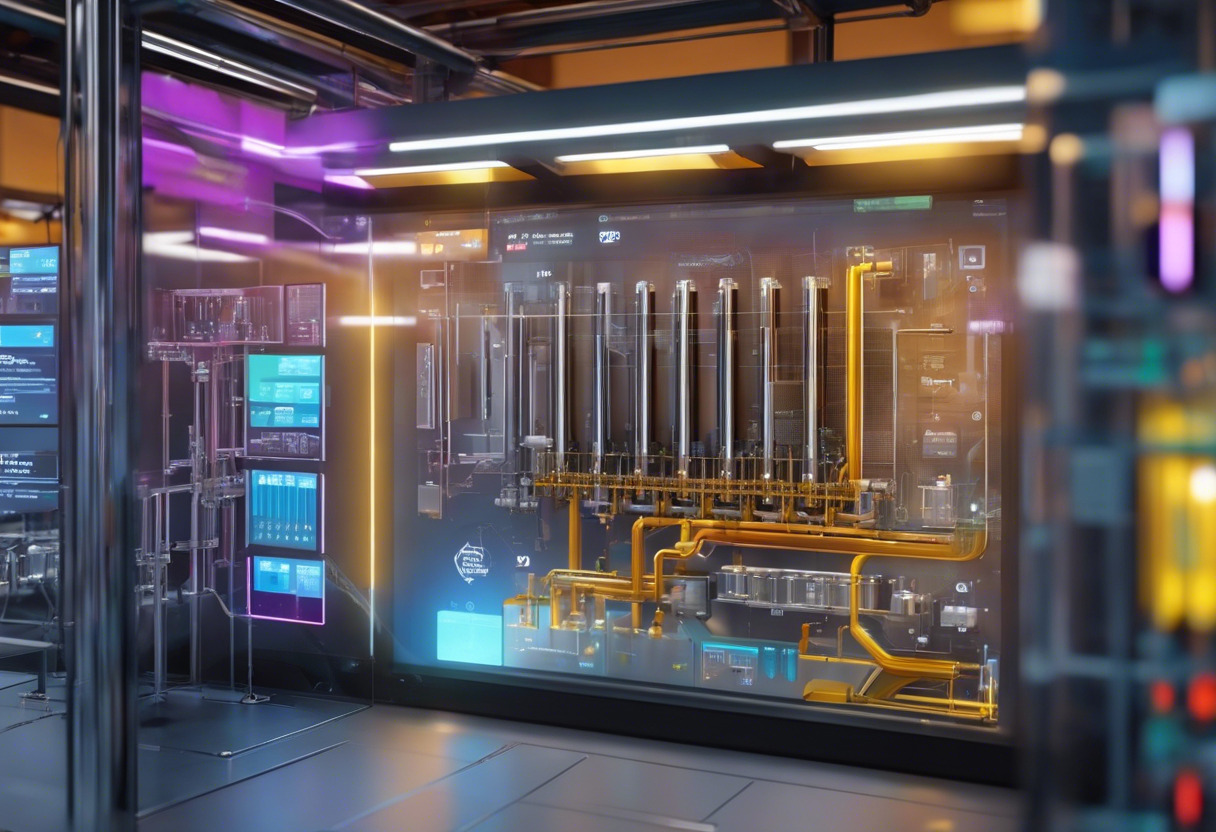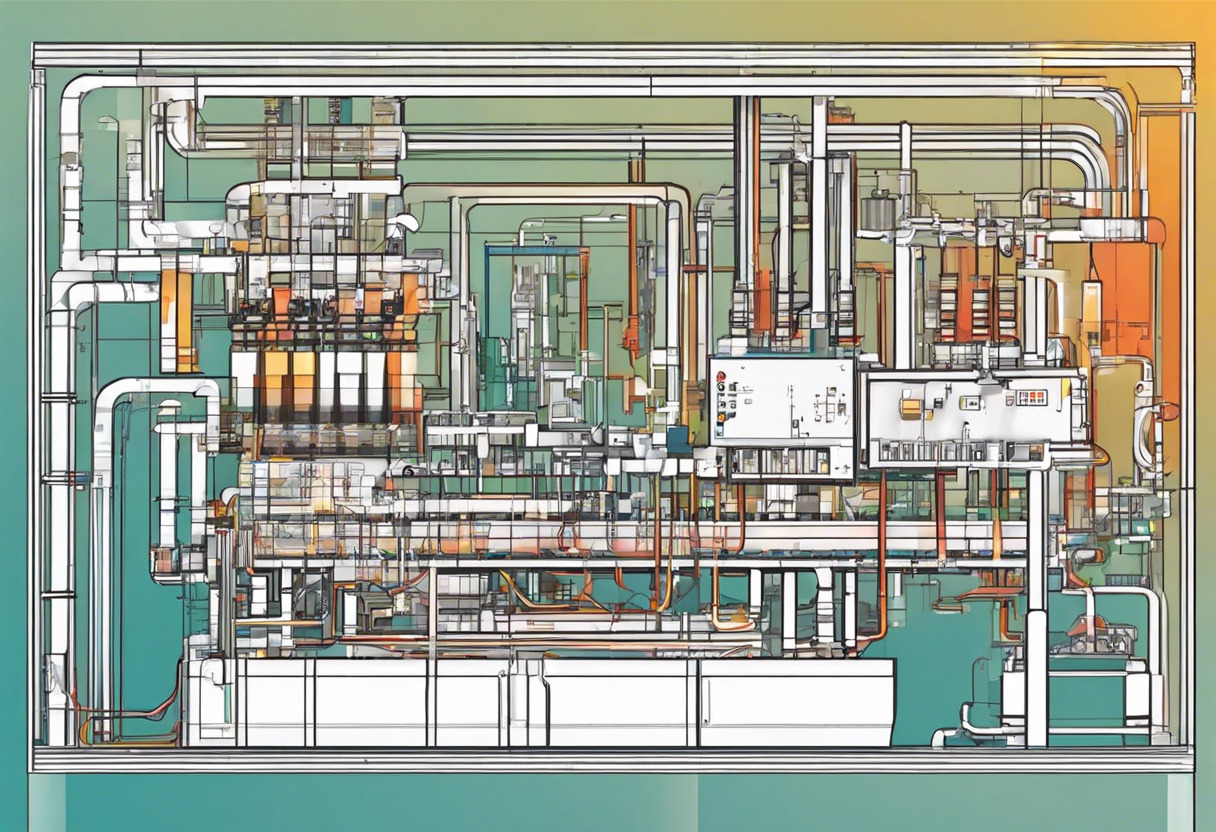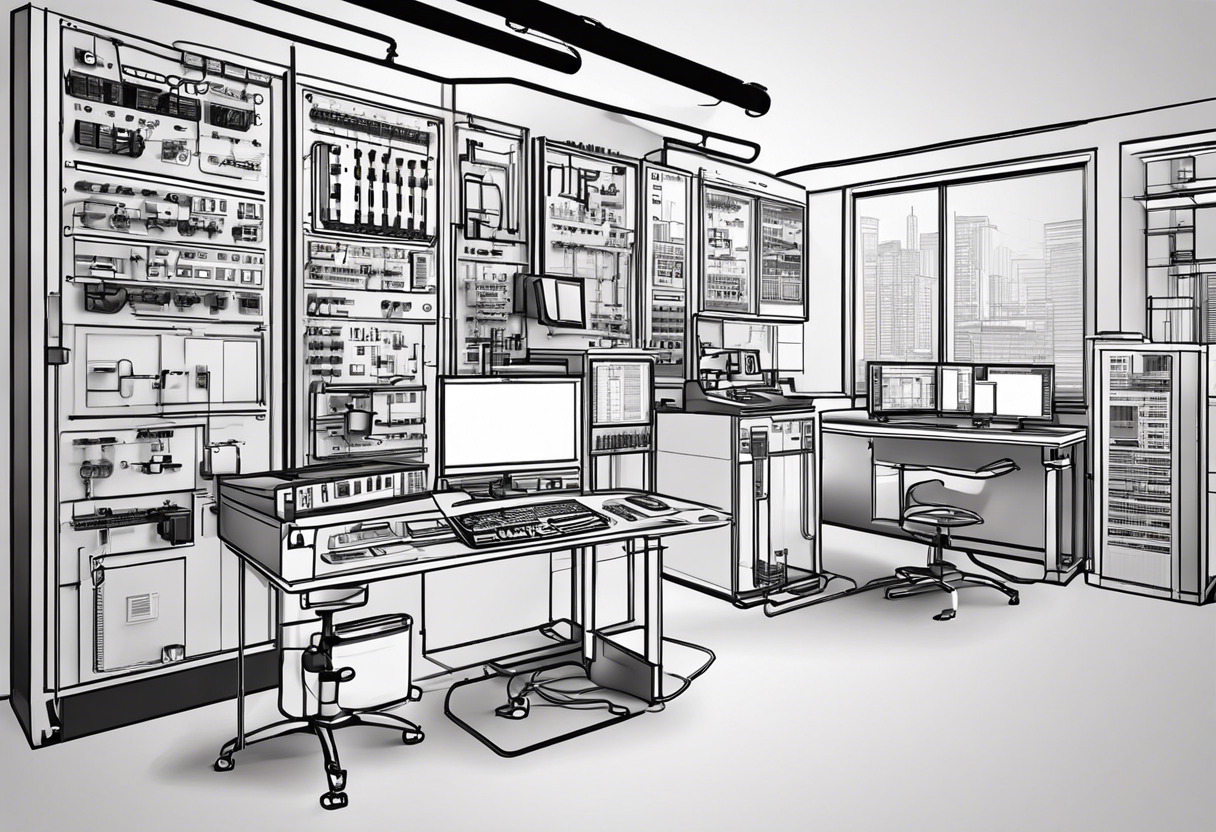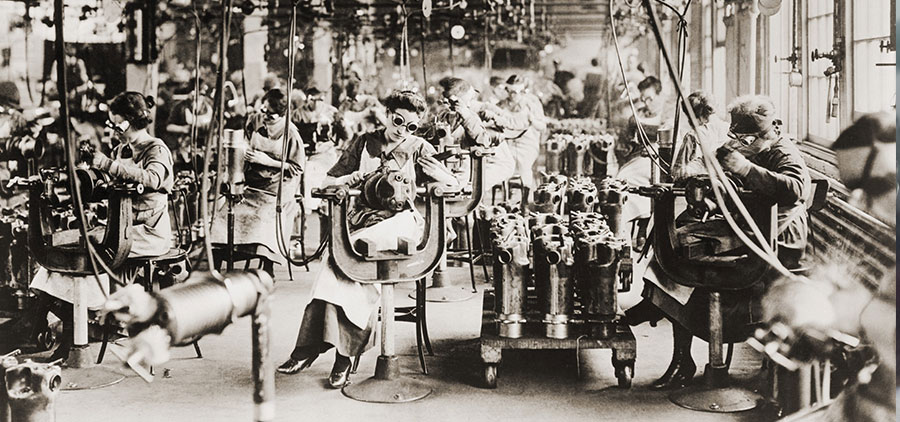HMI (Human-Machine Interface) and PLC (Programmable Logic Controllers) are integral aspects of industrial automation. However, HMI is ideal for data visualization and direct system interactions, particularly suited for system integrators and operators. In contrast, PLC, known for its higher processing speed, makes it apt for control tasks in manufacturing. Both are applicable depending on the operational requirements.

Key Differences Between HMI and PLC
- Interactivity: HMI is used for direct monitoring and interaction with industrial systems, whereas PLC is primarily for automating processes.
- Data Visualization: HMI features comprehensive data visualization capabilities; PLC doesn’t offer visualization but interacts with HMI for that purpose.
- Processing Power: PLCs are known for their high-speed processing capabilities compared to HMIs.
- Usage: HMI is suitable for system integrators and operators, while PLC is ideal for engineers trying to automate industrial operations.
| Comparison | HMI (Human-Machine Interface) | PLCs (Programmable Logic Controllers) |
|---|---|---|
| Function | User interface or dashboard connecting a person to a machine or system with visualization capabilities. | Automates various processes and operations in manufacturing; monitors and records runtime data. |
| Industry Application | Common in energy, food and beverage, manufacturing, oil and gas, power, recycling, transportation, water/wastewater. | Implemented in various areas such as robotic arm in cars, air compressors, airport runway control, traffic light control, smoke alarm control, textile equipment etc. |
| Advancements | Modern HMIs use high-performance HMIs, touch screens, mobile and edge-of-network HMIs; AR and VR technologies being explored for manufacturing visualizations. | PLCs are now smaller, faster and more powerful, integrated with ERP, MES and SCADA systems; application of advanced features like vision system integration, motion control, and support for multiple communication protocols. |
| Interaction with SCADA | HMI/SCADA systems aid in making important decisions in industrial plants and improve situational awareness, visualization mobility, and centralize control of equipment. | PLCs can be integrated with SCADA systems, aiding in improving the efficiency and performance of manufacturing operations. |
| Benefits | Facilitates improvements in industrial processes, situational awareness, visualization, and offers remote monitoring capabilities. | Provides flexibility, corrects errors, saves space, has lower cost, and allows easy testing and troubleshooting. |
What Is HMI (Human-Machine Interface) and Who’s It For?
HMI bridges the gap between humans and machines, creating a user-friendly interaction gateway. It’s predominantly used in industrial environments for data visualization. It allows operators, system integrators, and control system engineers to track production, monitor KPIs, and oversee machine inputs and outputs. Now, with advancements like touch screens, remote monitoring, and AR/VR integration, HMI’s reach is extending to various industries.

Pros of HMI
- Offers real-time data tracking and visualization.
- Enhances operational efficiency by digitizing processes.
- Progressive compatibility with touchscreen and mobile devices.
Cons of HMI
- May require effort and resources for initial setup.
- Modernization and customization might demand additional cost.
- Reliance on GUI may pose challenges for visually impaired users.
What Is PLC (Programmable Logic Controllers) and Who’s It For?
PLCs are the building blocks of modern automation and are integral to manufacturing processes. Born to replace bulky relay banks, PLCs have rapidly evolved: from suitcase-sized machinery to compact devices brimming with powerful capabilities. They offer seamless integration with other systems like ERP, MES, and SCADA, enriching the efficiency of manufacturing operations. Applicable to various domains—from controlling a robotic arm in car production to monitoring an airport runway.

Pros of PLC
- High flexibility and rapid error correction.
- Enhances machine productivity while conserving space.
- Ability to integrate with advanced technologies such as vision systems and multiple communication protocols.
Cons of PLC
- Troubleshooting can be complex.
- Requires a skilled workforce for operation.
- Depends on solid-state memory, which can be costly.
Unraveling the Final Verdict: HMI or PLC?
After dissecting the manifold characteristics of HMI and PLC, we arrive at the verdict. The optimal technology for you hinges on your intersecting fields of industry, areas of expertise, and specific use case requirements. Let’s delve.
1. Control System Engineers
For control system engineers navigating industrial processes, HMI proves unparalleled, enhancing situational awareness, controlling equipment, and improving alarm resolution. Its capabilities to interface with PLCs and sensors for data acquisition, tracking KPIs, and monitoring machine inputs/outputs are noteworthy. With the adoption of touch screens and mobile variants, access to remote monitoring and immediate data becomes attainable.

2. Operators and System Integrators
Emerging into prominence are operators and system integrators leaning towards HMI for its high-performance touch screens. Facilitating instant data access and remote monitoring, this technology enables the real-time overseeing of temperature, operational status in water treatment plants, oil and gas industries, manufacturing sectors, and more.

3. Industrial Automation Engineers
On the other end, industrial automation engineers vouch for PLCs. With extensive use in manufacturing sectors and its automated controls garnering momentum, PLCs offer flexibility, cost efficiency, and minimalistic spatial requirements. Their proficiency in monitoring machine productivity and operating temperature further exalts PLCs as an integral asset for intricate, high-performance operations.

Conclusively, while HMI’s prowess in digitizing and visualizing data empowers industries, PLC’s automation capabilities streamline the manufacturing sector, making these technologies invaluable in their respective domains. The prime deciding factors reside in your distinct industry needs and the complexity of your operations.
Grant Sullivan
Content writer @ Aircada and self proclaimed board game strategist by day, AI developer by night.





